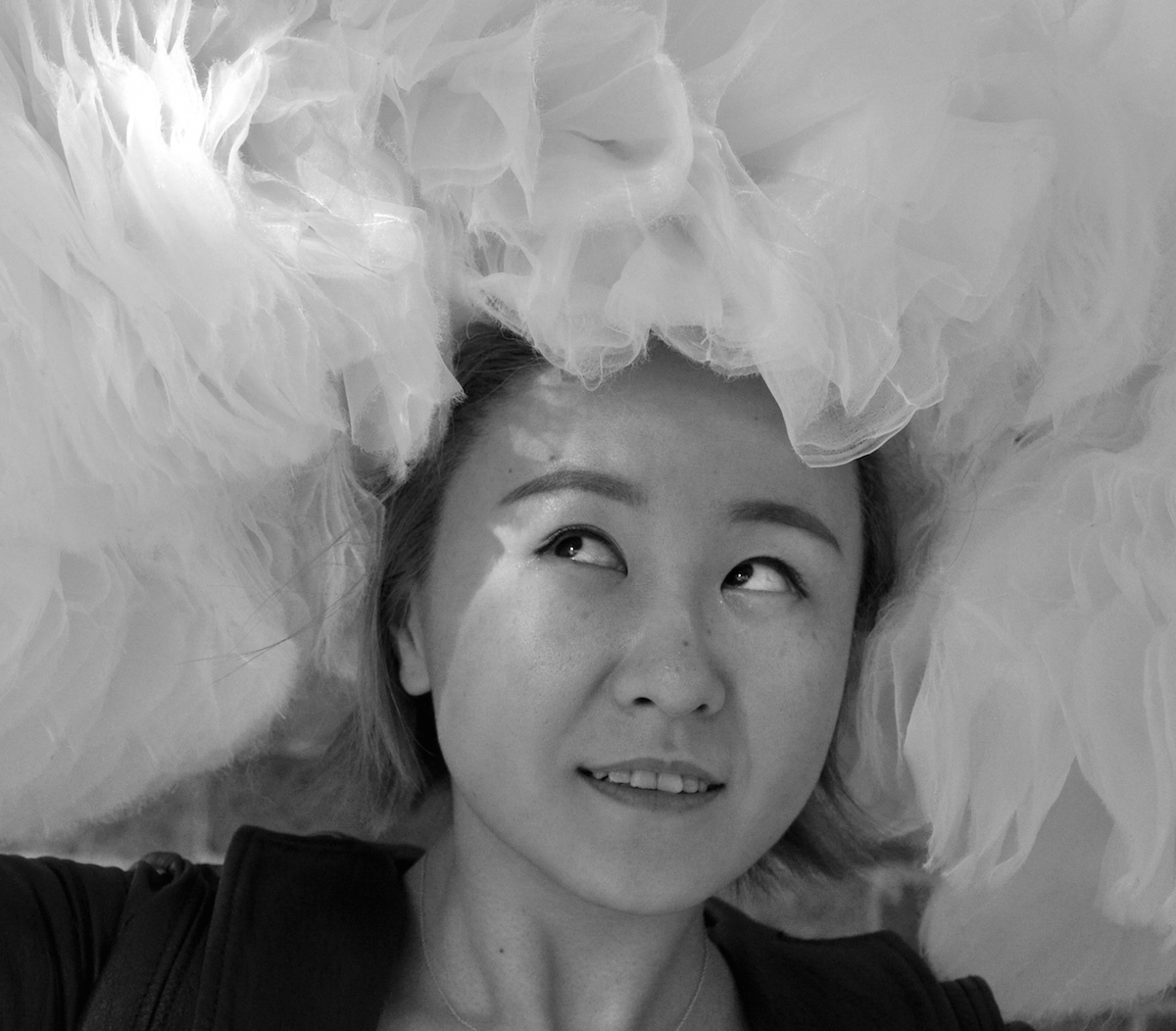Zhuxuan (Aimee) He is a designer who’s accustomed to challenging what’s expected of her. Since moving to Australia in 2008, her parents tried hard to shape her into a budding doctor to follow in their footsteps. It was an environment saturated with notions that fashion was nothing more than a passing hobby discussed at the dinner table; an environment which could easily have led anyone less determined to quit before they started.
But with her latest graduate collection featured recently in VAMFF’s National Graduate Showcase, her parents can’t deny how proud they are. Aimee’s work stands out by challenging our understanding of a defined silhouette. She achieves this by adopting an organic approach, where nothing is bound by any strict rule or logic. It’s an all-encompassing philosophy that incorporates a myriad of artistic influences, while adeptly taking us to a place where sustainability takes a front row seat.
Fresh off a flight from New Zealand, we caught up with Aimee to delve into the intricate background to her latest collection and to get an idea of well as what’s ahead for the promising graduate.

Let’s talk about your incredible origami dress. How long did the design and construction process take?
Actually, the design process wasn’t very long. But the sewing and construction took about two weeks. Then the dying process took another week. That said, I was literally at the sewing machine from 9am till midnight every day.
To what extent did you have to rely on technology to assist you with the complex patterns of the design?
With the way I started it, quite a lot. My initial plan was to have a completely 3D printed collection. I did a lot of research and experimentation, but I didn’t have the skills to build up the designs on a computer. I just didn’t know how to draw the 3D garments with the software. I tried collaborating with architecture students and industrial design students, but the designs were so different from what they were used to. And the 3D garment I wanted was just too complex. Eventually, I felt that it was going to be way too expensive. So in the end, I didn’t use any software. I just manually worked out the distances between each gap. I just had to use mathematics to figure out the distances between each layer to help with the size.
So what fabrics did you use in the end?
I used silk organza and wool wadding so the pieces aren’t heavy at all. The wool was from a scholarship I had with the Woolmark Company. And really the wool wadding was the best choice ever, because it’s lightweight, colour neutral, and it’s easy to dye. They have different thicknesses, which really helped the garments hold their structure. Plus they’re all natural fabrics.

You’ve said in the past that you’re influenced by nature and the sea. Where does that come from?
I think it came from my third year womenswear research. We explored this concept of a traditional Japanese aesthetic called wabi-sabi. The concept is about the beauty of imperfection, impermanence, and incompleteness. So organic to me means something raw, rough, and imperfect. With all my patterns, I draw them randomly, so all the curves on the garment are random and purely organic. There’s no set rule.
What do you hope to contribute to the fashion industry by designing?
It’s most definitely sustainable fashion. I think it’s the way they shape us in fashion school these days. We have to do so much research about this, and they push it really hard. That’s part of the reason why I started with 3D printing, because it uses 100 percent recyclable, zero-waste materials. So even though I couldn’t make that happen, in my current process I still use a zero-waste pattern making method.
Is it feasible to make sustainability a key focus of your fashion design moving forward?
Yeah, I think so. It’s hard to say anything about fast fashion because everything involves mass production. I don’t want to be a part of that. Then again, I don’t think I have the ability to push the industry that much, but I’ll do as much as I can.

So what can we expect from your next collection?
I’m still trying to find my aesthetic, even after this collection. I don’t think origami is the ultimate goal, because I still love prints, needle-felting and embroidery. So I’m looking to explore those spaces a bit more, instead of just focussing on one thing. I’m also thinking of applying for a masters in fashion next year, so we’ll just see after that. But I’m very excited.
Credits
Text Frankey Chung
Photographer Amanda Jia
